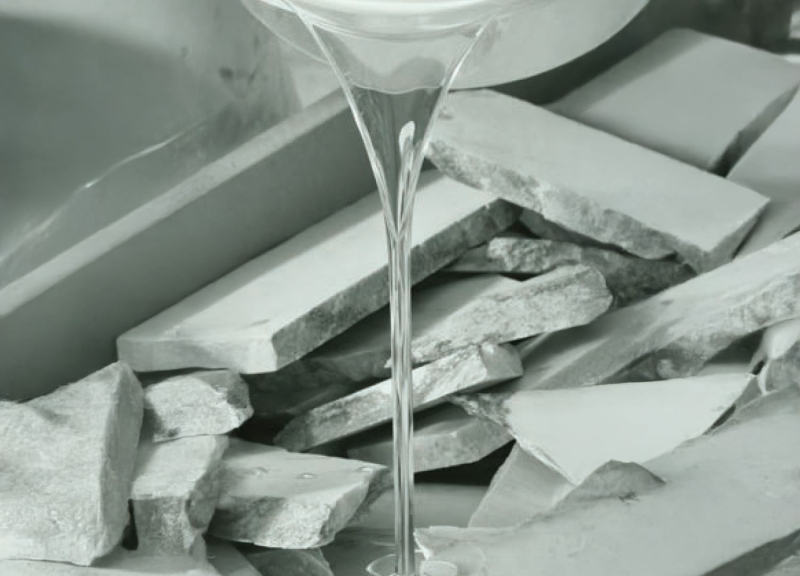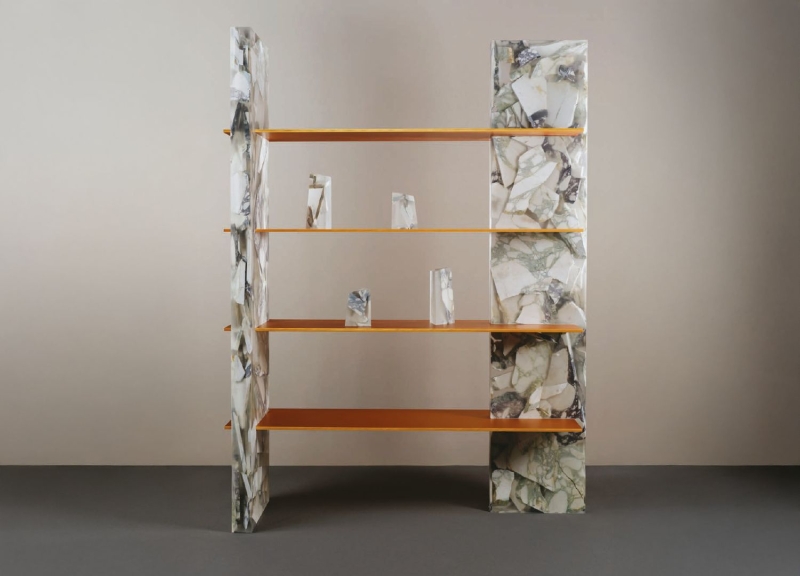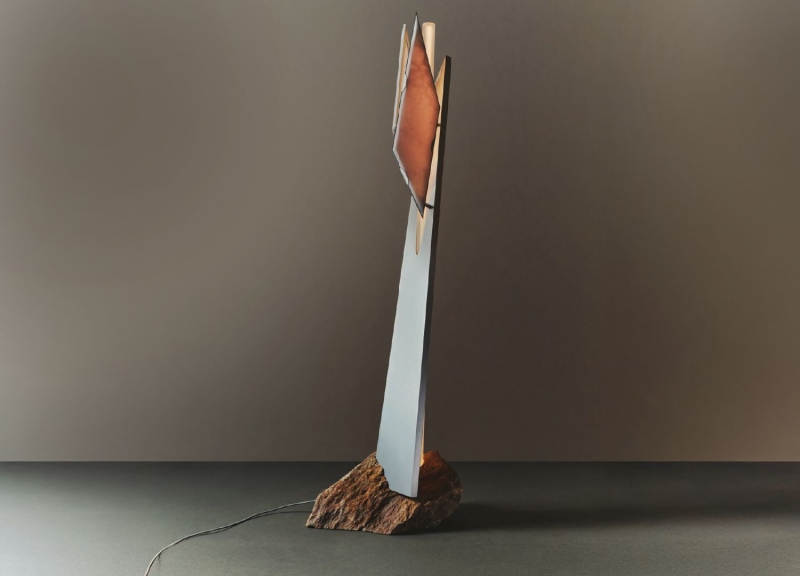Forgotten fragments come back to life in the Remains collection. Payam Askari, in collaboration with OmniaWorks, transforms marble scraps into unique pieces using resin and aluminum, blending raw materials in an exploratory, sustainable design project.
Sustainability, recycling, rebirth: terms we hear often. Yet few projects truly manage to transform waste into something new, unique, and meaningful. Remains does just that, offering a design metamorphosis that looks forward by working with what’s been left behind.
Conceived by designer Payam Askari in collaboration with OmniaWorks, the project debuted at Matter & Shape 2025. The collection originates in so-called marble cemeteries: quarry areas where discarded blocks, defective slabs, and abandoned offcuts pile up. These marginal, seemingly useless materials become the foundation for a new narrative. Rather than eliminate disorder, Askari embraces it, reorganizing each fragment with its veins and imperfections into coherent compositions that speak of time, process, and matter.

Remains Collection. Photo Studio Payama Askari & Omnia Works.
In the first, the designer uses epoxy resin as a binding element to give new value to accumulated materials, capable of suspending marble pieces in time and space. The fragments are carefully arranged and cast in layers, creating a composite slab with a “3D terrazzo” effect that highlights the interaction between the organic chaos of the stone and the structured clarity of the resin.
Once hardened, the surface is cut to reveal unexpected geometries, with overlaps that add depth and dynamism. This hybrid material is then used to create functional forms, such as a shelving system and a table, paired with anodized aluminum to generate visual continuity. The second approach eliminates binders altogether. Fragments remain autonomous, composed in space with a fragile yet deliberate balance. The result is a tension between weight and lightness, matter and void, where space itself becomes structure.
From theory to form: fragments become design
One of the main outcomes of the first method is the MT Shelving System, a shelving structure that fully expresses the potential of the hybrid material. The slab, created by layering Calacatta Viola marble fragments and pale green epoxy resin, is combined with bright orange anodized aluminum plates. The result is a composition where solid and void interact: the broken edges of the stone, stabilized by resin, intertwine with the linearity of metal. Each surface reveals an internal weave, expressing the depth of time etched into the material.

Remains project / MT Shelving System, Remains Collection. Photo Studio Payama Askari & Omnia Works.
The Flux Table represents another application of this method. Large “Notre-Dame” marble shards are arranged at an angle within a translucent epoxy resin slab, preserving an organic composition. A tubular profile in pink anodized aluminum crosses the structure, weaving through the fragments and helping to stabilize them. The edges of stone, metal, and resin are flush, creating a seamless surface. The interplay between materials generates a calibrated visual tension: a story of raw matter meeting geometric control.

Remains project / Flux Table, Romains Collection. Photo Studio Payama Askari & Omnia Works.
The Ascent Floor Light instead embodies the second approach, the one that rejects Binders. The piece is made up of three elements: a vertical block of pink onyx and two smaller fragments. The central one rests on a found “Giallo Siena” stone, while the others appear to float, suspended by a stainless steel profile with a silver-finished aluminum coating. A vertical LED tube crosses the composition, illuminating the material and giving life to a totemic object where function and sculpture coexist. Light reveals solids and absences, turning the installation into a balance between raw matter, suspension, and storytelling.

Remains project / Ascent Floor Light, Remains Collection. Photo Studio Payama Askari & Omnia Works.
Tabletop objects that carry the poetics of waste
Remains also extends to a smaller scale, with everyday objects that retain the same expressive power. The series includes a vide-poche, a vase, and bookends, crafted from Calacatta Viola and Notre-Dame marble fragments suspended in translucent resin. Here, imperfections become precious. The project’s ethos is clear: restoring dignity to what has been left behind.

